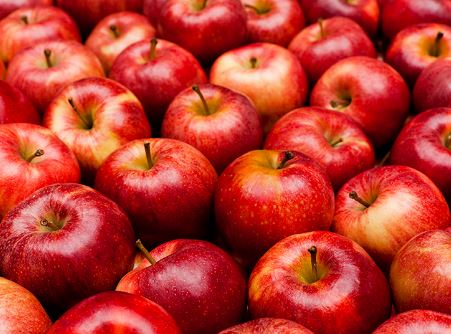Which pesticides are used on our apples?
![]()
Apples are a huge commodity in the U.S. and much of the rest of the world. In 2012, the U.S. harvested about 9 billion pounds for commercial use and sale. Apples are the second most popular fruit for U.S. consumers following oranges and represent a $3.1 billion industry.
Apples are also listed as one of the foods with the most pesticide residue. Environmental Working Group, a non-profit organization, listed apples in its 2012 "dirty dozen" list. It came in first place as the top fruit or vegetable with pesticide residues found. The Wall Street Journal reported that 98 percent of the apples tested positive for at least trace amounts of pesticide residues. However, only 1 out of 744 U.S. Department of Agriculture-tested apples were above acceptable standards.
Although EWG advises consumers not to stop eating fruits and vegetables because of pesticide concern, it is interesting to many chemists, farmers and consumers to know exactly which chemicals are on U.S. apples when they are purchased in the store. Here are a few of the most common pesticides used for this major crop.
Chlorpyrifos
Chlorpyrifos is an organophosphate insecticide that has been used since the mid-1960s. Chemically named O,O-Diethyl O-3,5,6-trichloropyridin-2-yl phosphorothioate, chlorpyrifos is also known as Dursban, Lorsban, Whirlwind, Warhawk and Eraser. More than 10 million pounds of chlorpyrifos are used on crops each year, with more than half being applied to corn. Chlorpyrifos may lead to nervous system damage for humans, including paralysis and death in high doses, the Environmental Protection Agency explained.
Diphenylamine
Diphenylamine shows up on apples more than any other pesticide, possibly because it is used post harvest rather than in the orchard to prevent scald, which is a browning of the skin. This pesticide has been used since 1947, although since the 1990s the U.S. government has begun regulation changes. It is banned in Europe for use on apples. Written as C12H11N, diphenylamine is also known as DPA, N-phenylaniline, anilinobenzene, N-phenylbenzenamine and benzenamine.
Captan
Captan is a thiophthalimide chemical compound used on apples as a fungicide. Captan, or (3aR,7aS)-2-[(trichloromethyl)sulfanyl]-3a,4,7,7a-tetrahydro-1H-isoindole-1,3(2H)-dione, is chemically written as C9H8Cl3NO2S and used for a number of personal care and industrial products, such as cosmetics and vinyl. It is applied to apples during growth to prevent fungi that could ruin the crop. Negative effects of Captan use include conjunctivitis and dermatitis in low quantities and gastrointestinal stress in higher quantities.
There are many other herbicides, insecticides and fungicides used for apple production, some of which carry potentially damaging side effects. This highlights the importance of correct pesticide use and standards testing for anyone involved.
CONTACT US
Tel: +44 (0) 151 649 4000
Email: marketing@greyhoundchrom.com
FOLLOW US
YOU MAY ALSO BE INTERESTED IN OUR NEWSLETTER
















